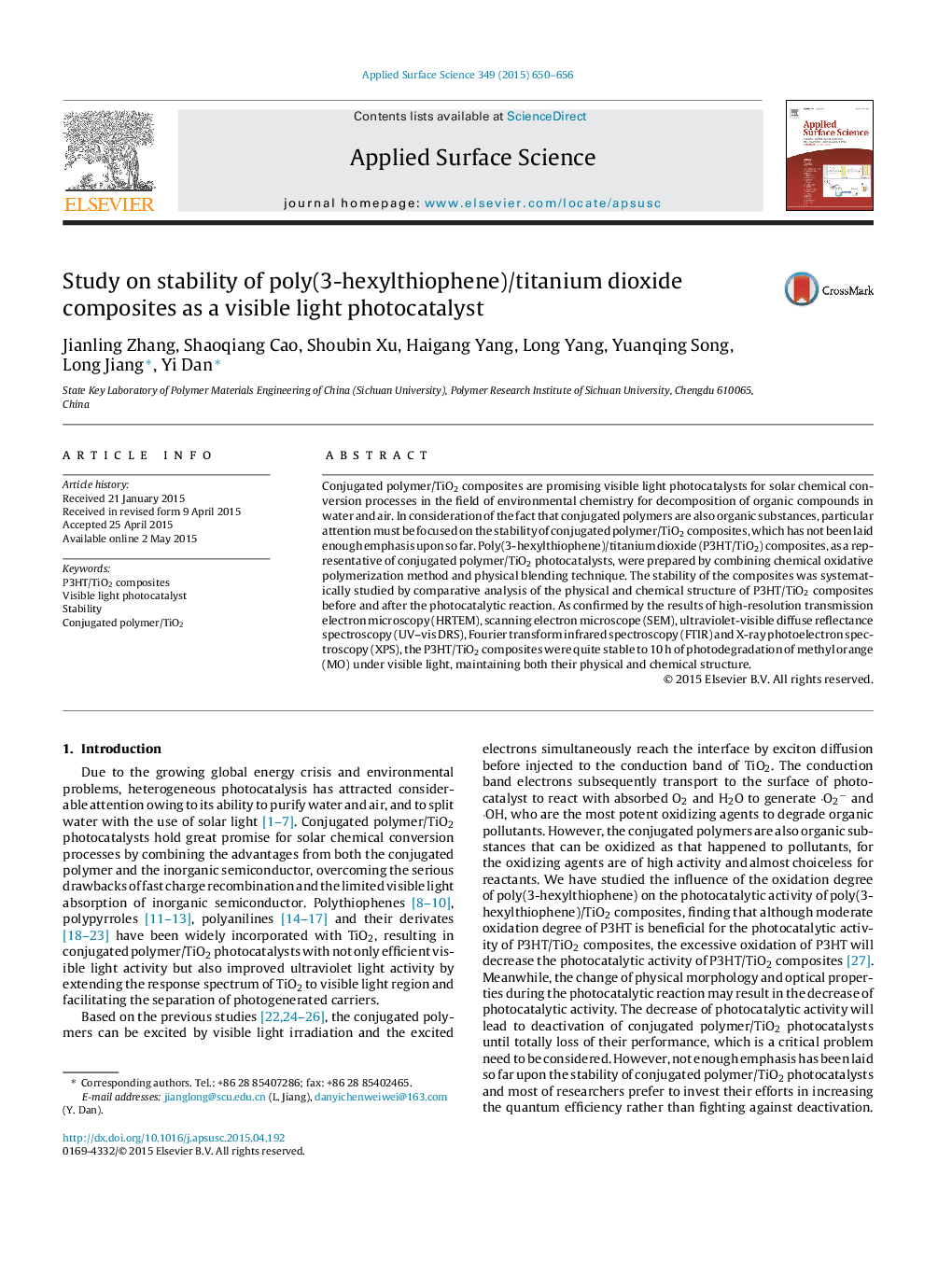| Article ID | Journal | Published Year | Pages | File Type |
|---|---|---|---|---|
| 5349386 | Applied Surface Science | 2015 | 7 Pages |
Abstract
Conjugated polymer/TiO2 composites are promising visible light photocatalysts for solar chemical conversion processes in the field of environmental chemistry for decomposition of organic compounds in water and air. In consideration of the fact that conjugated polymers are also organic substances, particular attention must be focused on the stability of conjugated polymer/TiO2 composites, which has not been laid enough emphasis upon so far. Poly(3-hexylthiophene)/titanium dioxide (P3HT/TiO2) composites, as a representative of conjugated polymer/TiO2 photocatalysts, were prepared by combining chemical oxidative polymerization method and physical blending technique. The stability of the composites was systematically studied by comparative analysis of the physical and chemical structure of P3HT/TiO2 composites before and after the photocatalytic reaction. As confirmed by the results of high-resolution transmission electron microscopy (HRTEM), scanning electron microscope (SEM), ultraviolet-visible diffuse reflectance spectroscopy (UV-vis DRS), Fourier transform infrared spectroscopy (FTIR) and X-ray photoelectron spectroscopy (XPS), the P3HT/TiO2 composites were quite stable to 10Â h of photodegradation of methyl orange (MO) under visible light, maintaining both their physical and chemical structure.
Keywords
Related Topics
Physical Sciences and Engineering
Chemistry
Physical and Theoretical Chemistry
Authors
Jianling Zhang, Shaoqiang Cao, Shoubin Xu, Haigang Yang, Long Yang, Yuanqing Song, Long Jiang, Yi Dan,
